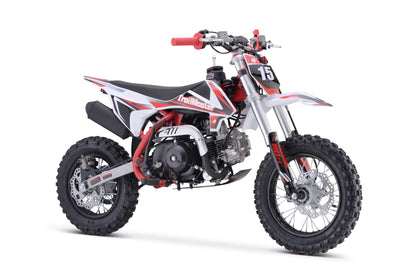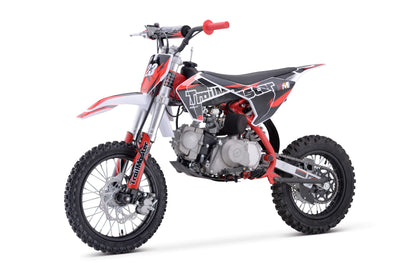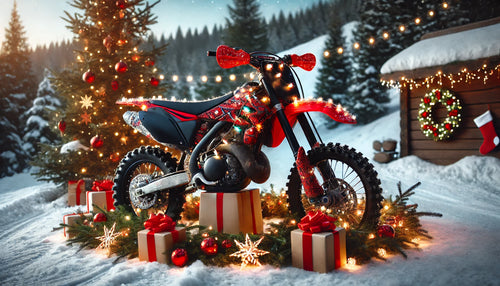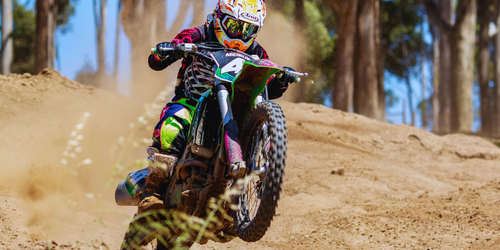
How to Ride a Go-Kart, ATV, or Dirt Bike Safely
- on July 08, 2024
- Categories: Articles
Whether you’re riding a go-kart, ATV, or dirt bike, the thrill of open-air recreational riding is hard to beat. The experience is distinct from driving—but is it safe?
When riding in these types of vehicles, you’ll have to consider a number of safety measures that may not come up in a car. Understanding the essentials of go-kart, dirt bike, and ATV safety will help you avoid accidents and injuries.
Essential Go-Kart, Dirt Bike, and ATV Safety Gear
Unlike in a car, recreational vehicles have little between them and the ground. Designed primarily for off-road applications, these vehicles require specific safety gear.
- Helmet: Look for a helmet that is DOT-certified for bike safety. These helmets provide better protection and ventilation suited for off-road riding.
- Gloves: Wearing durable gloves helps protect your hands from abrasions and impacts.
- Boots: Boots that cover your ankles are crucial for preventing injuries from falls or obstacles. These are especially critical for dirt bike safety, when you may be kicking off the ground or coming close to impact for certain maneuvers.
- Body armor: Body armor, including chest protectors and knee guards, offers additional protection.
Pre-Ride Safety Checks
You can’t anticipate everything that happens on the trail or track—but you can ensure your ride is in great shape before you head out. Mechanical failures present real threats to bike, kart, and ATV safety.
Start by checking the tires, making sure they’re inflated to the manufacturer-recommended PSI. Also, ensure your brakes are in good condition.
Make sure all controls are functioning properly and verify the fuel and oil levels. If you have any engine warnings or hear any unusual sounds, address these before riding.
In addition to the pre-ride check, stay on top of regular maintenance to ensure your vehicle is in good shape.
Understanding and Following Regulations
While you may not need a license for a dirt bike, off-road vehicles are still that—vehicles. As you would when operating any motor vehicle, you must follow all regulations and laws.
- Stay on Designated Trails: Riding off designated trails can damage the environment and disturb wildlife. Always stick to marked paths to minimize your impact.
- Yield to Other Riders: Be courteous and yield the right-of-way to other trail users, including hikers and horseback riders. This helps prevent accidents and ensures everyone has a pleasant experience.
- Know and Follow Local Laws: Different areas have specific regulations regarding where you can ride ATVs and dirt bikes. Riding on private property without permission, in restricted areas, or on public roads where it is not allowed can lead to fines and legal trouble. Always check local laws and obtain any necessary permits before riding.
- Avoid Riding in Sensitive Areas: Some areas, like wetlands and protected habitats, are off-limits to motorized vehicles. Respect these boundaries to preserve the environment.
- Trail Etiquette: Communicate with other riders and trail users. Use hand signals or verbal cues to indicate your intentions, such as passing or stopping. This helps prevent misunderstandings and accidents.
Familiarize yourself with the specific regulations of the trails you plan to ride on to ensure a safe and enjoyable experience.
Riding in Different Weather Conditions
Adjust your riding technique and gear based on weather conditions to ensure safety and a better riding experience. In wet or muddy conditions, reduce your speed and use gentle throttle and brake inputs. Consider tires with deeper treads for better grip.
In hot and dry weather, stay hydrated, wear lightweight, moisture-wicking clothing, and take frequent breaks in shaded areas. In cold or snowy conditions, wear insulated, moisture-wicking layers, reduce speed, and be cautious of icy patches. Consider using studded tires or tire chains for improved traction on ice and packed snow.
Adapting to different weather conditions helps you stay safe and enjoy your ride comfortably.
Can I Drive My Go-Kart Around My Neighborhood?
Driving a go-kart around your neighborhood might seem like fun, but it may not be legal—much less safe. Local regulations often prohibit go-karts on public roads due to safety risks.
It's best to check local laws or contact your local Department of Motor Vehicles for specific regulations. Alternatively, find designated tracks or private property where you can safely and legally drive your go-kart.
How Fast Can a Go-Kart Go?
Go-karts' speed capabilities vary depending on their type and engine size. Some can reach speeds of up to 60 mph or more.
Track conditions and the driver's skill level also influence the speed. When driving go-karts at high speeds, it's crucial to follow safety measures, including wearing protective gear and adhering to track rules.
Can I Ride My Dirt Bike on the Road?
Riding a dirt bike on public roads is subject to strict regulations and is often illegal unless the bike is properly modified to meet road safety standards. To be street-legal, dirt bikes must be equipped with features such as headlights, taillights, turn signals, mirrors, and a license plate.
Additionally, you must have the appropriate motorcycle license and insurance. It's crucial to check your local laws and regulations before riding your dirt bike on the road. Dirt bike safety on roads can look a lot different than safety on the track.
Can I Ride an ATV on the Street?
Similar to dirt bikes, riding an ATV on public streets is generally restricted and subject to local laws and regulations. ATV safety features don’t typically include necessary street-legal equipment, such as headlights, taillights, turn signals, and mirrors.
Some areas may allow ATVs on public roads if they are properly modified and registered, and if the rider has the appropriate license and insurance. Always check your local laws to determine if riding an ATV on the street is permitted and what modifications are required.
The Importance of Go-Kart, Dirt Bike, and ATV Safety
Safety should always be your top priority when riding ATVs , go-karts, and dirt bikes. By prioritizing dirt bike, go-kart, and ATV safety, you can enjoy a thrilling and secure riding experience.
Encourage your friends and family to follow these safety measures to ensure everyone's well-being. For additional safety tips and gear recommendations, explore our comprehensive off-roading resources.








